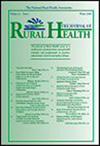“It was a good opportunity for us to be in touch with public health”: Independent community pharmacists’ experiences working with public health before and during COVID-19
Abstract
Purpose
Pharmacies have been a significant part of improving population health since before the COVID-19 pandemic. However, little is known about the working relationships between pharmacies and public health entities. This exploratory study describes independent community pharmacists' perceptions during COVID-19 of both pre-existing and newly created relationships with public health.
Methods
This paper is based on 42 qualitative interviews conducted as part of a broader study on North Dakota pharmacy's role in the COVID-19 pandemic. Authors analyzed interview data both deductively (based on a priori interview questions) and inductively (based on emergent themes). We used key quotes to map working relationships between pharmacy and public health on two axes: personal interactions and service provision.
Findings
Interviewees worked at 42 pharmacies (21 urban and 21 rural) and described relationships with public health entities that fell into four categories: (i) service provision with personal interactions predating the pandemic; (ii) service provision without personal interactions predating the pandemic; (iii) personal interactions that evolved during the pandemic; and (iv) service provision that evolved during the pandemic. Rural pharmacists described personal interactions and pre-pandemic service provision more often than urban pharmacists. Most urban pharmacists developed working relationships with public health entities solely because of the pandemic.
Conclusions
This study begins mapping the range of relationships that can exist between community pharmacies and public health entities. Our data suggest it may be possible to leverage pharmacists to extend public health's reach and improve the health of medically underserved, rural populations.

 求助内容:
求助内容: 应助结果提醒方式:
应助结果提醒方式:


